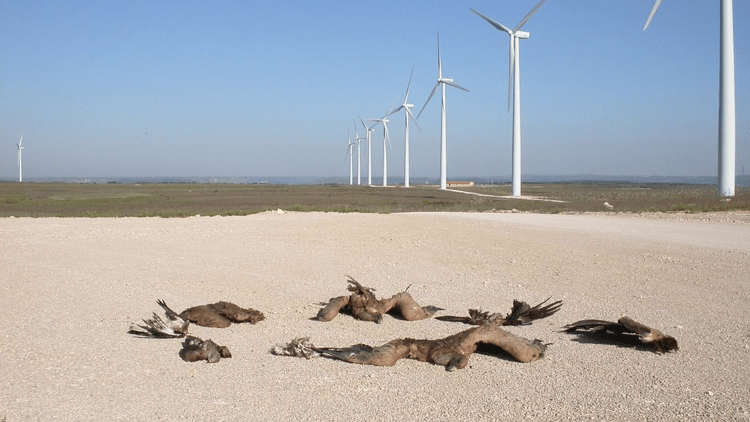A recent study published in the journal PLOS ONE has highlighted the significant threat wind turbines pose to migrating birds and bats.
Conducted over 13 years and covering approximately 30% of wind turbine locations in the United States, the study found that bats were more heavily impacted by wind turbines, with a total of 10,291 fatalities, compared to 3,789 bird fatalities. The study also identified seasonal patterns of collision fatalities based on ecoregion and found that most wind facilities are located on the prairies and plains of the central and western states, where numerous species of grassland birds are year-round inhabitants and at risk of collision.

Bat fatalities increased from mid-June to mid-November, peaking in late summer and fall. The study’s authors called for more detailed data reporting from wind facilities across the United States to understand patterns of bird and bat fatalities better.
In addition, they also suggested that adjusting curtailment requirements for wind turbines based on ecoregion-specific needs could potentially increase operation frequency for some sites while prioritizing the protection of vulnerable bird and bat species.

While wind energy is a crucial component of the transition to a more sustainable energy system, it is essential to consider the potential environmental consequences of wind turbines. Therefore, further research, data collection, and strategic planning are necessary to protect vulnerable bird and bat species while maximizing the benefits of renewable energy.
“First and foremost, this study helps us understand why certain species of birds and bats are more likely to collide with wind turbines than others,” said John Lloyd, the lead author.

“But it also highlights the power of collaborative research – our analysis, and the patterns it uncovered, was only possible because we could draw on data from hundreds of different studies conducted across the United States and compiled in the American Wind Wildlife Information Center,” he added.
Balancing environmental concerns with energy needs is crucial, and it will require ongoing collaboration and innovation to find solutions that work for everyone.


